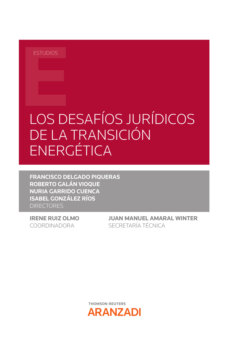Читать книгу Los Desafíos Jurídicos de la Transición Energética - Isabel González Ríos - Страница 63
На сайте Литреса книга снята с продажи.
III. PLANNING TO EXPAND ELECTRICITY GRIDS 1. PRIORITIES CONCERNING TRANS-EUROPEAN NETWORK INFRASTRUCTURE
ОглавлениеThe trans-European energy infrastructure regulation (TEN-Regu-lation (EU) 347/2013)22 is based on Art. 172 TFEU and requires that regional groups be established for the purpose of proposing and reviewing projects of common interest. These regional groups should work cooperatively with the Member States involved, national regulatory authorities, project promoters and other relevant stakeholders23. The regulation also establishes guidelines for the timely development and interoperability of so-called “priority energy infrastructure corridors and areas”.
One of these priority infrastructure corridors is the north-south electricity interconnection lines in Western Europe (“NSI West Electricity”) between Austria, Belgium, France, Germany, Ireland, Italy, Luxembourg, Malta, the Netherlands, Portugal, Spain (and the United Kingdom). The key issue of the NSI West Electricity is the need to integrate electricity from renewable energy sources and to reinforce internal grid infrastructure to foster further market integration in this area24. The priority electricity corridors “NSI East Electricity”25 and “Northern Seas Offshore Grid-NSOG”26 have similar goals. A fourth project is the Baltic Energy Market Interconnection Plan (“BEMIP Electricity”) to overcome the isolation of the Baltic States.
For any project labelled as a project of common interest under the trans-European energy infrastructure regulation, approval procedures must be streamlined, coordinated and accelerated while public consultation is broadly sought27. Rules and guidance are provided for cross-border cost sharing and risk-based incentives regarding projects of common interest and securing EU financial support (via the Connecting Europe facility28) is possible29.
For the EU, priorities in this area are smart grids that allow for the integration of actions of all users connected to the electricity grid in an efficient way as well as the development of “electricity highways”30.
